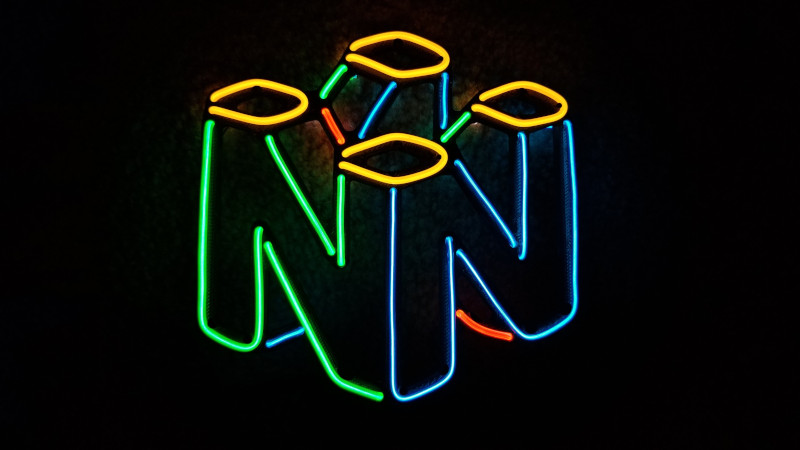Neon signs are attractive, but require specialised tools and skills for their manufacture. If you don’t have time to learn glass blowing and source the right gasses, you’re pretty much out of luck. However, EL wire can give a similar aesthetic, and with an off-the-shelf power supply it is easy to hook up and get working. [sjm4306] combined this with 3D printing for a quick and easy build.
The project starts by selecting a Nintendo 64 neon sign as a basis for the design. An image of the sign was traced in Inkscape, and an outline imported into CAD software. From there, a frame was designed with posts for the EL wire to wrap around, and holes for it to pass through to the back of the sign. The frame was then 3D printed, and laced with EL wires in the requisite colors.
The final result is impressive, with the EL wire serving as a great small-scale simulacrum of neon tubes. It’s a construction method that should scale as large as your 3D printed assemblies can go, too. If you need to get to grips with how it works, there’s a tutorial available for working with EL wire. Video after the break.
















Kind of surprised I don’t see stuff like this in people’s battlestation* builds. There’s so much RGB this, and that.
*Pics of new computer builds.
EL Wire was a huge part of builds back in the early 2000s, but LEDs are superior in just about every way when it comes to aesthetics. I still have at least 3 EL Wire kits, still new in packaging, that I never got around to installing from like 2004.
The easiest and cheapest way to get EL in the 00s was actually to buy computer case kits on ebay
I’ve bought a few of these but got disappointed for how dim they were
The coloured wire brightness depends on frequency;
This can be done without a 3d printed frame too.
Simply print out your design on a paper, fix it on a board, drill holes along the lines, and tie the EL wire with thin cord on the board through the holes.
This project does it like that (in German but has plenty of photos)
https://www.fingers-welt.de/gallerie/eigen/elektro/neonschild/neon.htm
I think this is always the dream with EL, but it never really lives up. The impact it has in person is just way off. It’s never clean, precise, or straight enough; the flicker is all wrong; the brightness is wrong; too small. The gradient inside the tube. There’s a lot going on with neon.
The only issue I have with EL wire is the sound it produces. Sometimes, late at night, the only thing I can hear is the distant high pitch whirring of EL wire from my past. The sound activated option is a great way to eliminate the noise, though it obviously changes the display.
I’ll have to play around with damping the transformer in the inverter to see if I can decrease the noise to tolerable levels. So far it isn’t too bad if you are more than a few feet away and there is any ambient sounds like music but yes it is annoying if the room is dead silent.
Maybe y’all should just save your money up. Purchase one from a neon artist craftsperson who could use the money instead of China who creates this garbage. Plus it will last approximately 50 years vs this stuff that will give you a year of output maximum….then go into a landfill.
I’d rather learn and do something myself than pay someone else to do something for me, even if what they produce is better than what I can. That’s what is called a hobby, and this is hackaday after all not paysomeoneelseaday. You’ve completely missed the point of this project. It isn’t about the end product, it is about the process, learning and experimenting. I don’t argue that craftsman would benefit from more business but in the end you don’t learn anything new that route either. I don’t argue that neon isn’t a better sign choice than EL (of course ignoring situations that require mechanical robustness and limited flexibility). If all you are after is just a pretty thing to hang on the wall then that’s fine by all means spend the money, but don’t assume that is all that matters in life.